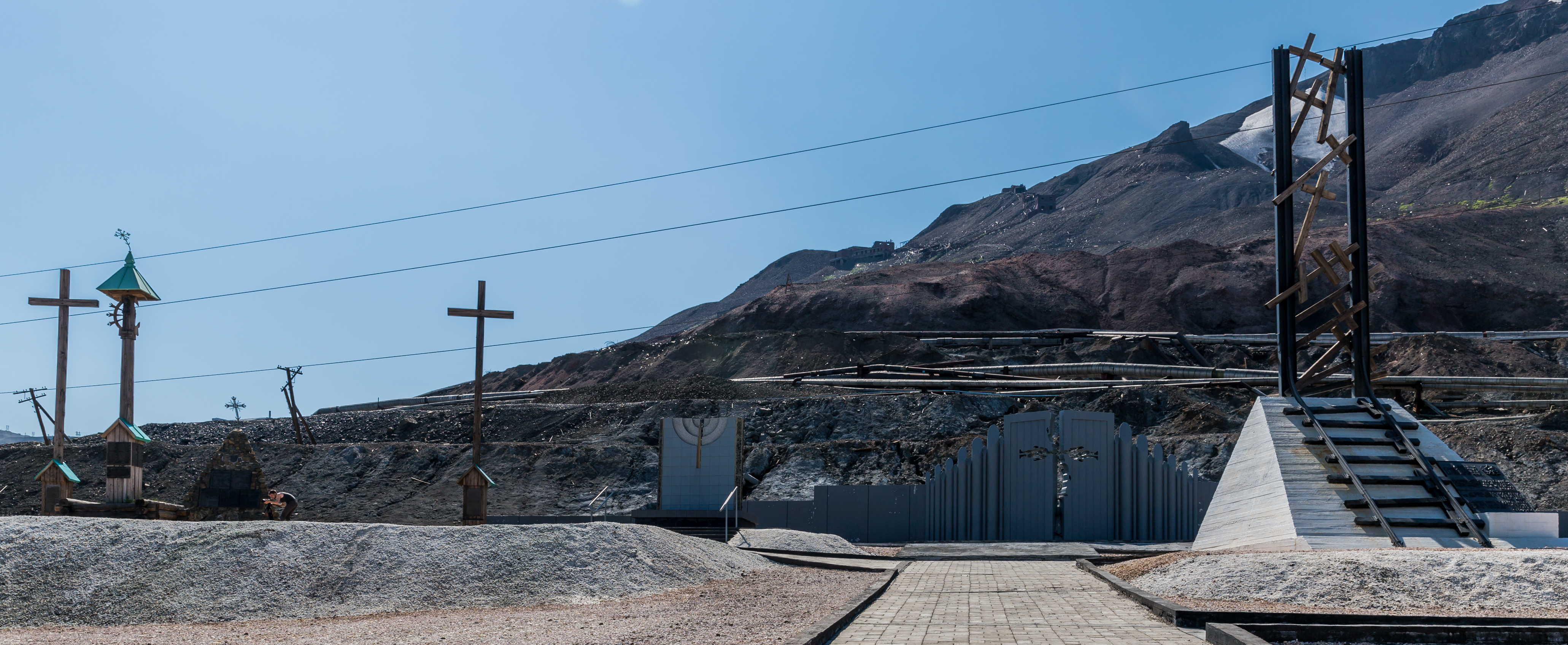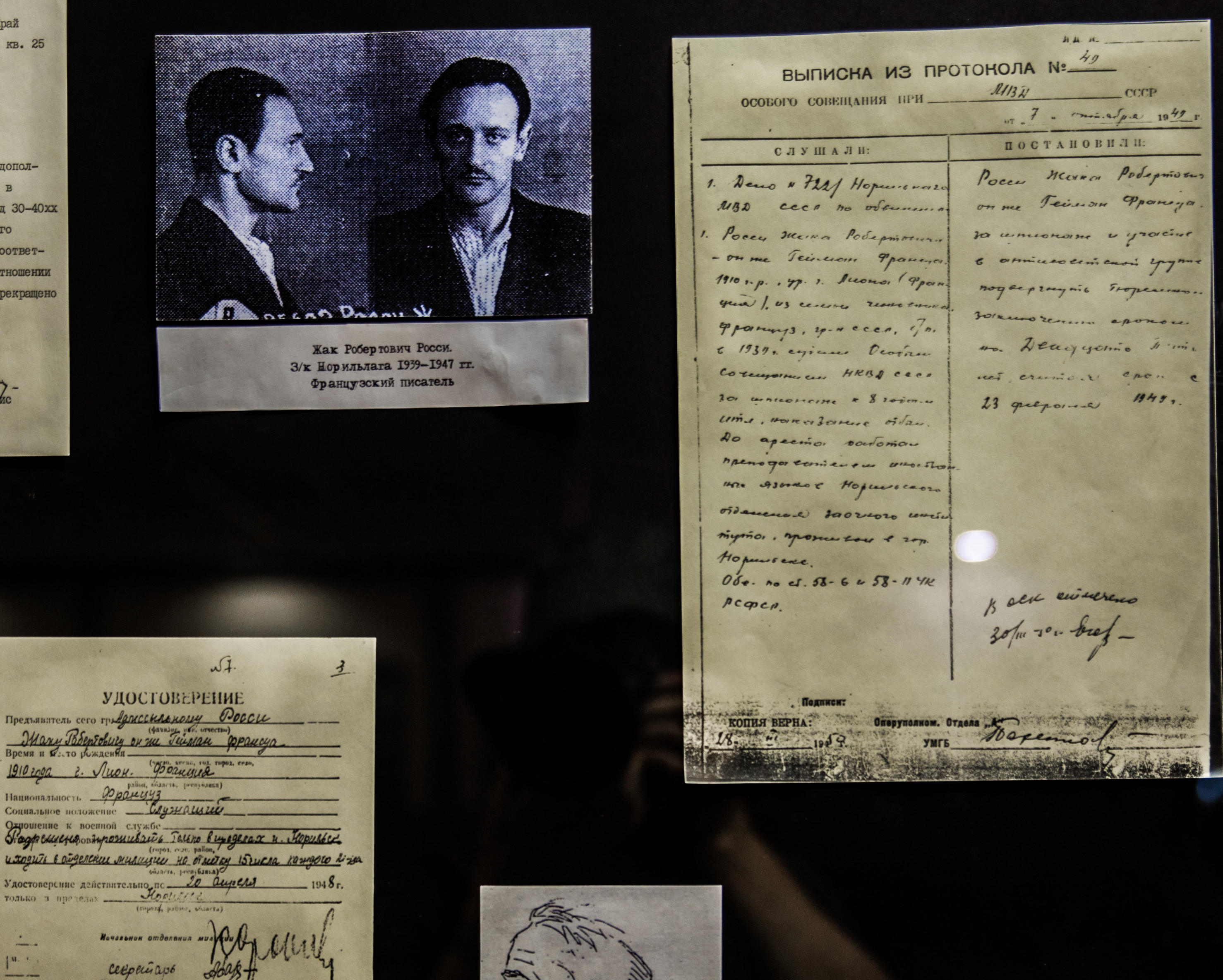Norilsklag on:
[Wikipedia]
[Google]
[Amazon]
 Norillag, Norilsk Corrective Labor Camp () was a
Norillag, Norilsk Corrective Labor Camp () was a
 *
*
/ref> *
p. 176
/ref> *
Norilsk (Gulag online)
{{coord missing, Krasnoyarsk Krai Norillag Buildings and structures in Krasnoyarsk Krai
 Norillag, Norilsk Corrective Labor Camp () was a
Norillag, Norilsk Corrective Labor Camp () was a gulag
The Gulag was a system of Labor camp, forced labor camps in the Soviet Union. The word ''Gulag'' originally referred only to the division of the Chronology of Soviet secret police agencies, Soviet secret police that was in charge of runnin ...
labor camp
A labor camp (or labour camp, see British and American spelling differences, spelling differences) or work camp is a detention facility where inmates are unfree labour, forced to engage in penal labor as a form of punishment. Labor camps have ...
set by Norilsk
Norilsk ( rus, Нори́льск, p=nɐˈrʲilʲsk) is a closed city in Krasnoyarsk Krai, Russia, located south of the western Taymyr Peninsula, around 90 km east of the Yenisei, Yenisey River and 1,500 km north of Krasnoyarsk. Norilsk is 300 ...
, Krasnoyarsk Krai
Krasnoyarsk Krai (, ) is a federal subjects of Russia, federal subject (a krai) of Russia located in Siberia. Its administrative center is the types of inhabited localities in Russia, city of Krasnoyarsk, the second-largest city in Siberia after ...
, Russia
Russia, or the Russian Federation, is a country spanning Eastern Europe and North Asia. It is the list of countries and dependencies by area, largest country in the world, and extends across Time in Russia, eleven time zones, sharing Borders ...
and headquartered there. It existed from June 25, 1935 to August 22, 1956.Norilsky ITLHistory
Initially, the Norillag labor force was responsible for the construction of the Norilsk mining-metallurgic complex and for miningcopper
Copper is a chemical element; it has symbol Cu (from Latin ) and atomic number 29. It is a soft, malleable, and ductile metal with very high thermal and electrical conductivity. A freshly exposed surface of pure copper has a pinkish-orang ...
and nickel
Nickel is a chemical element; it has symbol Ni and atomic number 28. It is a silvery-white lustrous metal with a slight golden tinge. Nickel is a hard and ductile transition metal. Pure nickel is chemically reactive, but large pieces are slo ...
. Its activities gradually expanded into virtually all economical functions of the region, from fishing
Fishing is the activity of trying to catch fish. Fish are often caught as wildlife from the natural environment (Freshwater ecosystem, freshwater or Marine ecosystem, marine), but may also be caught from Fish stocking, stocked Body of water, ...
to "reconstruction of the house where lived Comrade I.V. Stalin in exile".
Starting from 1,200 inmates in 1935, its numbers jumped to 9,000 in 1937 (the onset of the Great Purge
The Great Purge, or the Great Terror (), also known as the Year of '37 () and the Yezhovshchina ( , ), was a political purge in the Soviet Union that took place from 1936 to 1938. After the Assassination of Sergei Kirov, assassination of ...
) and peaked in 1951 at 72,500, housed in 30 camp sections. ''Memorial
A memorial is an object or place which serves as a focus for the memory or the commemoration of something, usually an influential, deceased person or a historical, tragic event. Popular forms of memorials include landmark objects such as home ...
'' estimates the total number of its inmates over the history of the camp at 400,000, with about 300,000 being political prisoner
A political prisoner is someone imprisoned for their political activity. The political offense is not always the official reason for the prisoner's detention.
There is no internationally recognized legal definition of the concept, although ...
s. The geography of this camp system included the Norilsk area, including Dudinka
Dudinka (; Nenets: Тут'ын, ''Tutꜧyn'') is a town on the Yenisei River and the administrative center of Taymyrsky Dolgano-Nenetsky District of Krasnoyarsk Krai, Russia. It used to be the administrative center of Taymyr Autonomous Okrug, ...
and Kayerkan
Kayerkan (), located in the northern part of Krasnoyarsk Krai, Russia and in the southern part of the Taymyr Peninsula, was a town under jurisdiction of Norilsk
Norilsk ( rus, Нори́льск, p=nɐˈrʲilʲsk) is a closed city in Krasnoyar ...
, as well as more remote places, including Krasnoyarsk
Krasnoyarsk is the largest types of inhabited localities in Russia, city and administrative center of Krasnoyarsk Krai, Russia. It is situated along the Yenisey, Yenisey River, and is the second-largest city in Siberia after Novosibirsk, with a p ...
and some agricultural camps in Kureika (village)
Kureika () is a Russian village just north of the Arctic Circle near Turukhansk in Krasnoyarsk Krai, by the confluence of Kureika River and Yenisey.
Here Joseph Stalin spent his final exile in 1914–1916. In 1938 the was established. In 1952 ...
, Atamanovo and Shushenskoye
Shushenskoye ( rus, Шу́шенское, p=ˈʂuʂɨnskəjɛ) is an urban locality (an urban-type settlement) and the administrative center of Shushensky District of Krasnoyarsk Krai, Russia, located at the confluence of the Yenisei and Big ...
.
Initially the construction activities were handled by the Norilstroy (Норильстрой), while Norillag supplied the workforce and some infrastructure.
In 1953, shortly after the death of Joseph Stalin
Joseph Vissarionovich Stalin (born Dzhugashvili; 5 March 1953) was a Soviet politician and revolutionary who led the Soviet Union from 1924 until Death and state funeral of Joseph Stalin, his death in 1953. He held power as General Secret ...
, the Gorlag camp of Norillag system was the place of the major Gulag revolt, known as the Norilsk uprising
The Norilsk uprising was a major strike by Gulag inmates in Gorlag, a MVD special camp for political prisoners, and later in the two camps of Norillag TL Norilsk, USSR, now Russia, in the summer of 1953, shortly after Joseph Stalin's death. A ...
.
It was closed in 1957, together with most of the Gulag system.
Notable inmates
 *
* Aleksei Balandin
Aleksei Aleksandrovich Balandin (, December 20, 1898 – May 22, 1967) was a Soviet Union, Soviet chemist member of the Academy of Sciences of the Soviet Union. His primary contribution lies in the field of Organic chemistry, organic catalysis, ...
* Dmitri Bystrolyotov
Dmitri Aleksandrovich Bystrolyotov (January 4, 1901 – May 3, 1975) () was a Soviet Russian intelligence officer, a polyglot, a writer and a Gulag prisoner. As a Soviet undercover operative, Bystrolyotov worked in Western Europe between World War ...
*Herbert Brede
Herbert Lorentz Brede (25 April 1888 in Püssi – 6 October 1942 in Norilsk) was an Estonian soldier and general.
Brede fought in World War I as an officer of the Imperial Russian Army against the Central Powers. After World War I he fought ag ...
(1888–1942), Estonian military commander
*Walter Ciszek
Walter Joseph Ciszek, Jesuits, S.J. (November 4, 1904 – December 8, 1984) was a Polish-American Jesuits, Jesuit priest of the Russian Greek Catholic Church who Clandestine operation, clandestinely conducted Christian mission, missionary wo ...
(1904–1984), Polish-American Jesuit priest
*Lev Gumilev
Lev Nikolayevich Gumilev (also Gumilyov; ; – 15 June 1992) was a Soviet and Russian historian, ethnologist, anthropologist and translator. He had a reputation for his highly unorthodox theories of ethnogenesis and historiosophy. He was an ...
pp. 103-106/ref> *
Eufrosinia Kersnovskaya
Eufrosinia Antonovna Kersnovskaya (; 8 January 1908 – 8 March 1994) was a Russian woman who spent 12 years in Gulag camps and wrote her memoirs in 12 notebooks, 2,200,000 characters, accompanied with 680 pictures.
She wrote three copies of th ...
(1908–1994), writer and artist
*Grigoriy Kirdetsov
Grigory Lvovich Kirdetsov (; Luga, Saint Petersburg Governorate, Russian Empire, 1880 – presumably Norillag, not before 1940) was a Russian and Soviet writer, journalist, and translator. Of Jewish extraction, his real name was possibly Lev (L ...
(1880–1938), journalist and translator
*Voldemar Karl Koht
Voldemar Karl Koht VR II/3 (until 1940 Voldemar Karl Koch; 21 February 1893 – 2 September 1942) was an Estonian soldier and commander of the Estonian Armored Train Regiment.Õun, M; Noormets, T; Pihlak, J (2003). ''Eesti soomusrongid ja soom ...
(1893-1942), Estonian military officer
*Nikolai Aleksandrovich Kozyrev
Nikolai Alexandrovich Kozyrev (; 2 September 1908 – 27 February 1983) was a Soviet Russian astronomer and astrophysicist.
Biography
He was born in Saint Petersburg, and by 1928 he had graduated from the Leningrad State University. In 1931 he b ...
(1908-1983), Soviet Russian astronomer and astrophysicist
* (1896-1975), Hungarian writer
*Jānis Medenis
Jānis Medenis (May 31, 1903 – May 10, 1961) was a Latvian poet and writer. In 1948, he was convicted of anti-Soviet activities, and imprisoned in the Norillag camp, later in Irkutsk Oblast
Irkutsk Oblast (; ) is a federal subjects of Ru ...
(1903–1961), Latvian poet and writer
* Isaiah Oggins (1898–1947), American communist and Soviet spy
*, Evenk writer and poet
* Jacques Rossi (1909–2004), Polish-French writer and polyglot
* Shukrullo, Uzbekistani poet (1921–2020)
* Sergey Snegov, Soviet science fiction writer'Красный сфинкс: Истории русской фантастики от В.Ф. Одоевского до Бориса ...''p. 176
/ref> *
Karlo Štajner
Karlo Štajner (15 January 1902 – 1 April 1992) was an Austrian-Yugoslav communist activist and a prominent Gulag survivor. Štajner was born in Vienna, where he joined the Communist Youth of Austria, but emigrated to the Kingdom of Serbs, ...
(1902-1992), Croatian writer
*Nikolay Urvantsev
Nikolay Nikolayevich Urvantsev (; – 20 February 1985) was a Soviet geologist and explorer. He was born in the town of Lukoyanov in the Lukoyanovsky Uyezd of the Nizhny Novgorod Governorate of the Russian Empire to the family of a merchant. He ...
(1893–1985), geologist and explorer
* Nikolai Vekšin (1887–1951), Estonian sailor
*, Russian botanist and poet
See also
*References
Hoover Institution Press
The Hoover Institution (officially The Hoover Institution on War, Revolution, and Peace and formerly The Hoover Institute and Library on War, Revolution, and Peace) is an American public policy think tank which promotes personal and economic ...
, 2003
External links
Norilsk (Gulag online)
{{coord missing, Krasnoyarsk Krai Norillag Buildings and structures in Krasnoyarsk Krai